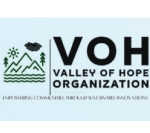
Valley of Hope
DUE: 12 APR 2024
TERMS OF REFERENCE FOR BASELINE SURVEY – GEFSGP PROJECTS
STANDARD TEMPLATE
BACKGROUND/ PROJECT DESCRIPTION
The Global Environment Facility Small Grants Programme (GEFSGP) is a corporate programme for
UNDP, UNEP and World Bank designed to support sustainable development activities. It supports
actions at community level to address five critical threats to the global environment namely
Biodiversity loss, Climate Change, Land Degradation, International Waters and Chemicals. The
Baseline Assessment seeks to bring out the key environmental challenges being addressed by the
project in line with the GEFSGP thematic areas. The other key elements to be covered are socio
economic issues relating to livelihoods, gender, youth, Persons with Disabilities (PWDs) participation
and health. The baseline assessment process will include community consultations, and stakeholders
including local authorities, local leadership, government departments and other relevant partners.
Baseline survey is expected to provide relevant and in-depth analysis for the following areas:
1.0 DEMOGRAPHIC INFORMATION
Quantifiable indicators number of direct and indirect beneficiaries (sex segregated data).
Number of youths going to participate (sex segregated data)
Number of vulnerable people like widows, orphans Persons with Disabilities participating in
the project (sex segregated)
Literacy levels of project members
2.0 BIODIVERSITY
Assess current ecological status, systems, trends (include forests, grasslands, agricultural
systems, streams, wetlands, etc) of the area.
Determine biodiversity status (species composition, habitat assessments, protected species,
vulnerable species, endangered species etc.) and identify anthropogenic led problems
affecting the biodiversity.
Identify important bird areas and bird species.
Indicate natural resources currently being utilized and status of conservation.
Indicate hectares of wetland area and natural forests to be protected
Indicate the type and number of agrobiodiversity products to be produced at the project.
Identify fish farming status and potential
Conduct an assessment/Inventory of current conservation activities by establishing who is
doing the work, where the activities are being carried out and results achieved that need
replication or scaling up
Assess level of public awareness on key environmental issues including veld fires, climate
change, deforestation etc
Identify IKS being used in conservation of resources and existence of local level by laws
Identify related partnerships in conserving biodiversity and levels of collaboration
(stakeholder inventory)
3.0 CLIMATE CHANGE MITIGATION AND ADAPTATION
Indicate whether project is aligned with larger/ national and international frameworks for
example NDCs.
Indicate hectares of forests to be protected for enhancement of carbon stocks.
In terms of carbon proofing, indicate number and type of trees to be planted.
Indicate the sources of green-house gas emissions and how the project is going to reduce
emission of green-house gases.
Is the project going to have strategies of calculating the level of green-house gases reduced
after intervention?
Are there climate change disasters/shocks experienced in the area?
What strategies are being used to respond to this shocks/build resilience in the community?
4.0 LAND DEGRADATION
Specify areas to be addressed in terms of land degradation in the project
If they are gullies, indicate number of gullies and total area in hectares to be rehabilitated.
Specify the strategies to be done in terms of reclamation of degraded areas.
Indicate number of hectares to be brought under improved agricultural, land and water
management practices.
What are the cropping strategies being adopted by project to reduce soil loss and degradation
of agricultural land i.e Sustainable Land Management (SLM).
Indicate number of farmer leaders to be involved in successful demonstrations of agroecological practices.
Indicate number of farmer organizations, groups or networks going to disseminating
improved climate smart agro-ecological practices.
6.0 AGRICULTURAL PRODUCTION, VALUE ADDITION AND LIVELOODS
ENHANCEMENT
Identify cropping activities in the targeted areas (key crops, production levels) including
irrigation schemes/group activities. Put quantifiable indicators in kgs on levels of production
for each crop per season per individual or group before project intervention.
Identify current Natural Resource based enterprise activities and opportunities.
Assess the level of income per each enterprise per month or per season.
Identify and assess value addition potential for each product.
Conduct market analysis and value chain studies for each product. Are there post-harvest
losses.
Assess the knowledge base for production, processing and marketing and identify training
needs.
Identify and document local traditional knowledge for processing.
Food Systems and Health Risks – what are the cropping systems being used and do they pose
risk to the environment and people?
What are different types of livestock in the project area? How is the grazing land/area being
managed?
7.0 CAPACITY DEVELOPMENT
Has a capacity needs assessment been conducted for the project to identify the areas that the
project needs to be trained on.
Do the project members and beneficiaries have the requisite skills for implanting the project?
Which areas need training and who is going to offer training?
Is there going to be development of knowledge materials. If yes indicate the materials to be
developed.
From the list below, select strategies going to be undertaken by project in the area of capacity
building and provide details for selected areas:
Going to strengthen grantee networks.
Peer to peer knowledge exchanges
To organize training within project grants on specific technical issues
Connect grantees with government services
Connect grantees with NGOs/INGOs
Connect grantees with the academia or research centres
Connect grantees with development agencies/practitioners
Connect grantees with private sector companies.
8.0 SOCIAL INCLUSION
i) GENDER
Is the project led by a woman (e.g., had a female project coordinator/manager)
Does the project have gender policy, strategy and action plan?
Do women have access to natural resources (forests, land and other resources) in terms of use
and control of the resources?
Indicate the patterns of power and decision making in the project?
Indicate number of women in leadership positions and in the project committee
What are the needs of men, women and youth? How are the needs for women being
addressed by project? What is the percentage of funds in the project directed towards
addressing the needs of women?
Indicate Gender Roles, Responsibilities/Division of Labour and Time Use. Are there gender
specific activities, outputs, outcomes, and disaggregated indicators in project design?
Are women involved in the whole value chain?
How are the benefits in the project shared between men, women, youth and PWDs.
Do women in the project have skills and capacity? If there are gaps are there specific ways of
addressing this in the project (Gender Training Needs Analysis)
Which mechanisms is the project going to use to ensure women’s empowerment and gender
equality during the reporting period
Is the project going to produce knowledge and guidance materials on how to mainstream
gender in community-based projects?
Is the project going to partner with gender/women’s organization in the country?
Is the project going to support networking at the national level and global level with other
gender platforms?
ii) YOUTH
How many youths are participating in the project (sex segregated)
What are the needs of youth and how are these addressed by project? What is the
percentage of funds in the project directed towards addressing the needs of youth.
Are youth part of the leadership structures
iii) PERSONS WITH DISABILITIES (PWD
How many persons with disabilities are participating in the project (sex segregated)
What are the needs of PWDs and how are these addressed by project? What is the
percentage of funds in the project directed towards addressing the needs of PWDs
What different forms of disabilities are being addressed by the project?
Indicate the strategies being done to assist PWDs to effectively participate in terms of
reasonable accommodation.
Are PWDs part of the leadership structures?
TO APPLY
Click here for more and how to apply TORs for Baseline survey

